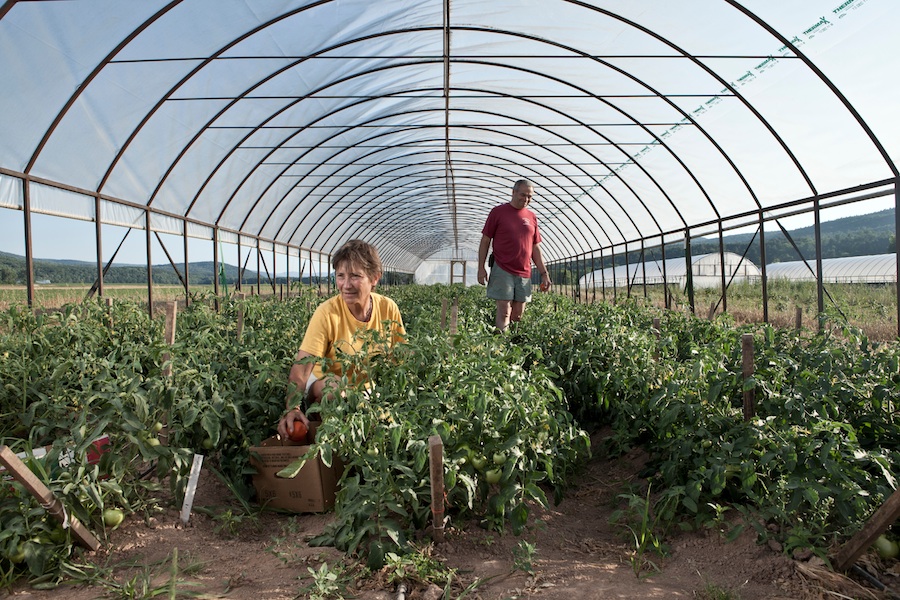
Farmer, Middleburgh, Schoharie County
Barber is a 5th-generation family farmer who farms 400 low-spray acres in the Schoharie Valley. On August 28, 2011, eight feet of water covered her fields and greenhouses, full of late-summer produce. Her house was flooded as well. She estimates that it will take seven years to recoup the money lost in the flood.
Barber recalls:
Our farm got clobbered. We were blessed because we got water that came from Blenheim and Prattsville, and we did not have all of the contamination issues like Schoharie did with the oil and petroleum. We lost our home. There was damage done to buildings, tractors. We worked fast, and the mechanics that have always serviced our stuff jumped into action. Anything that had an engine or a motor in my greenhouses or my storage facilities, that was gone.
We lost our whole fall crop. Our roads were cut off. The road down in Blenheim, that was closed until December 7. Anybody trying to get to us, they couldn't.
We think it's going to take us about seven years to recoup that money. We're going to be paying monthly for seven years to make up for what we couldn't pay back last season. This year, we're still trying to get back to where we were. At this point, we're doing very well, because we borrowed a lot of money, and we also got money through the state and federal government to repair and clean up and do field cleanup.
I am the president of Barber Family Farm, Inc. My nephew is vice president, so we're a family farm, ever though we carry that "Inc." thing. "Corporate" farms, a lot of times, are just two generations trying to make things work.
We farm 400 acres. Annually we put 180 acres into vegetable crops, which we sell at our roadside farm market and at a couple of satellite stands. We employ up to about 50 people during the season, so you can see right there with the economy, if I can't reinvest in my business, that am I going to downsize. These are part-time people, so it's going to be college kids, teachers, retired folks.
We are low-spray. Everything is hand-harvested, which is very labor-intensive. Our labor bill is huge. Our labor bill takes up more than half of our income.
We have a greenhouse operation, and we grow about 150 different varieties of vegetables. We sell pretty much everything. I guess 80 percent of what do is direct marketing, meaning we sell from one of our farm stands. We do 80 acres in crops each year, and then other 220 acres would be done in cover crops for soil nutrients.
We are trying to go towards sustainability for years and year and years. That's one of the reasons why our land fared as well as it did during the flood: it was because we had so much of it still in cover crops. It wasn't bare ground. This types of of plant cultural practice helped us in the long run because we didn't have so much erosion.
Our biggest problem wasn't so much that we lost a lot of topsoil, it was that we gained a lot of gravel. Our equipment was buried in gravel. We put our equipment up high, not expecting that water was going to come running down the hills and tributaries to bury our equipment and tractors in gravel. We freed it up. That's the kind of thing that the grant money went towards: to remove gravel, to fill holes.
Text by Julia Reischel. Photo: Cindy Barber in a greenhouse that, during the flood, was filled up to the roof by floodwaters. Photo by Christopher Auger-Dominguez.



